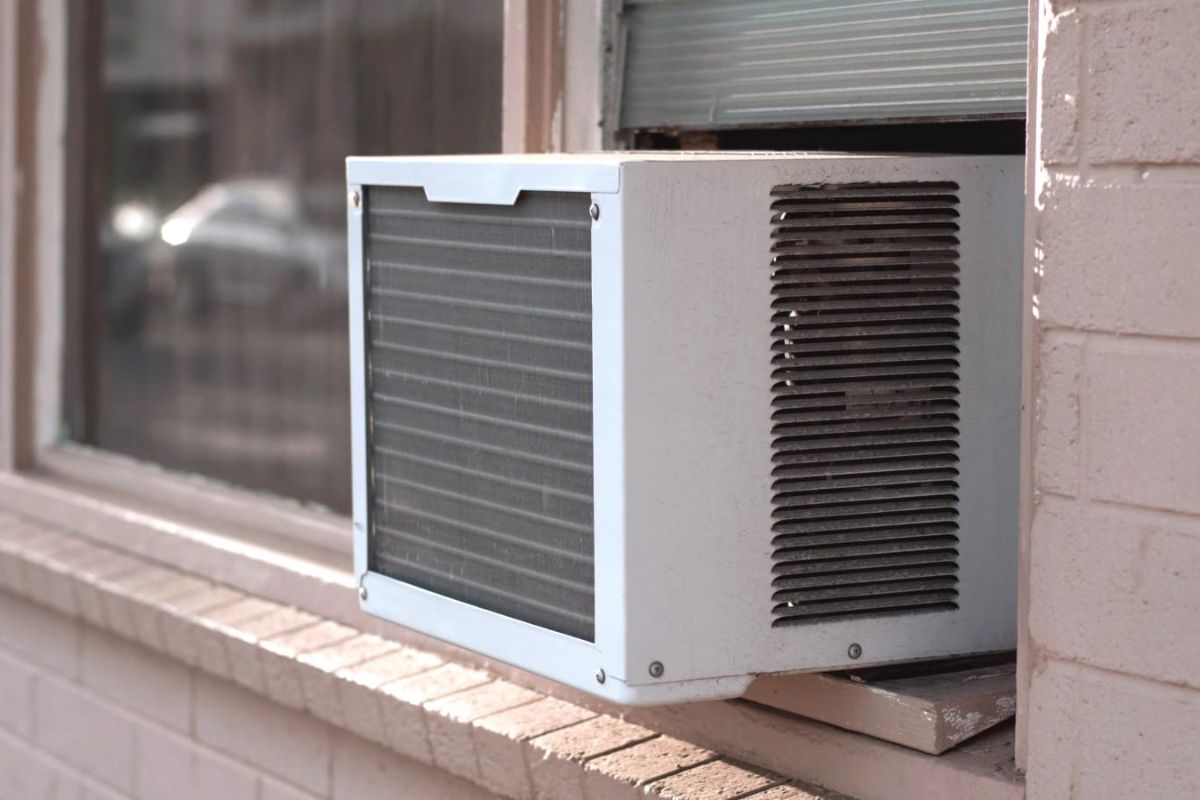Window air conditioners are one of the simplest forms of air conditioning and are undoubtedly an excellent choice for individuals living alone or renting apartments. However, many people may find installing a window air conditioner in a sliding window to be a challenge. In fact, this task can be easily accomplished by ourselves.
Now, let us begin exploring the steps to install a window air conditioner in a sliding window, ensuring that you can effortlessly complete this task on your own and enjoy a cool and comfortable summer.
Before We Start
First, you need to prepare some basic tools and materials:
-
Measuring tape for measuring the dimensions of the window and the air conditioner;
-
Electric screwdriver for installing or adjusting the air conditioner bracket;
-
Level to ensure the air conditioner is balanced during installation;
-
Foam sealing materials to fill the gaps between the air conditioner and the window frame to prevent cold air leakage.
In addition to preparing the tools, do these works to ensure a smooth installation process:
Take safety precautions
Make sure to cut off the power before starting the installation work. Additionally, wear protective gloves and other safety gear as needed.
Choose the installation location
The ideal installation location should allow the air conditioner's cool air to cover the entire room evenly, avoid direct sunlight, and be away from heat sources. Furthermore, there should be a proper power outlet nearby to avoid using extension cords, as they may pose safety risks.
Clean the window
Ensure the window frame is free of dust and debris to make the installation smoother and ensure a good seal after installation.

Match the size of the window and the air conditioner
Measure the window opening and compare it with the width and height of the small window ac to ensure they match, which can prevent size mismatch issues during installation.
Check the stability of the window
Ensure the window can bear the weight of the air conditioner and use a level to measure the window's levelness, making sure the air conditioner can be placed securely without causing any issues due to tilting. If any issues are found during the preparation, it is more convenient and safer to make adjustments at this time rather than during installation.
Step by Step Guide to Install Window Air Conditioner
Install the bracket for window ac
-
Place the air conditioner bracket block on the bottom frame of the window (the windowsill).
-
Use a screwdriver to insert and tighten the screws on the pre-drilled holes of the bracket, securing the bracket to the windowsill tightly.
-
Attach and secure the other bracket blocks one by one.
If the manufacturer has not provided a bracket, you can make a suitable rectangular bracket yourself using materials such as wood or plywood.
Place and secure the window ac
-
Place the air conditioner unit onto the bracket bottom.
-
Use a level to check if the air conditioner is level.
-
Center the window ac in the window by measuring the distance from each side of the window air conditioner.
-
Locate the mounting holes or slots on the top and sides of the air conditioner.
-
Use screws to secure the air conditioner to the bracket and window frame through these holes.
Proper leveling is critical for the window AC's drainage and efficiency. If the air conditioner is tilted, it may cause internal mechanical wear or improper circulation of the cooling. If possible, it is advised to get a helper: one person can steady the air conditioner while the other adjusts its position.
Seal and gaps and inspect:
-
Use foam insulation to fill in the gaps around the air conditioner, especially where it contacts the window frame.
-
Use sealing tape to fill the remaining gaps like the window brims.
Lastly, carefully inspect each part of the installation. Ensure all screws are tightened, all components are secure, and the side panels and sealing tape are not loose.

Testing the Window Air Conditioner
Power-on Test:
-
Pug in the air conditioner and turn on the device.
-
Observe whether it starts smoothly and confirm that all the function buttons on the control panel respond properly.
-
Set the air conditioner to cooling mode, medium fan speed and temperature settings, and let it run for a few minutes.
-
Observe if it cools evenly and listen for any unusual noises or vibrations.
Check Air Circulation:
-
Check if the temperature in various parts of the room decreases evenly.
-
Adjust the direction of the air conditioner or check for items blocking the airflow, if some areas have insufficient cooling.
Drainage and Sealing Check:
-
Ensure that the air conditioner's drainage is functioning properly. Confirm that condensate water can drain smoothly from the drain pipe, and the pipe is not kinked or blocked.
-
Recheck the sealing, especially where the foam insulation tape is applied. If you detect any air leaks, you may need to reinforce the sealing.
Troubleshooting:
-
If you encounter any issues during the test, such as the device not starting, poor cooling performance, or unusual noises, first check if the power outlet and power cord are well connected. Ensure that no improper extension cords are used.
-
Refer to the troubleshooting section in the user manual to identify possible causes and solutions. For complex issues, it is advisable to contact a professional technician or the hvac manufacturers experts for inspection and repair.
FAQ
Do window AC units need to be screwed in?
For secure installation and good seals, window AC units need to be securely screwed into the window frame. To have more secure installation, you can use an air conditioner window bracket to share the weight of window AC.
Can I use other filling materials aside from plywood for filling the blank when installing window ac?
Yes, aside from plywood, you can use materials like rigid foam insulation or plexiglass as alternatives. These materials can be cut to fit your windows and can provide good insulation and a neater appearance than plywood, while plywood is more cost-effective.
What could cause noise when the window air conditioner is running?
Check to see if the air conditioner for small window is mounted horizontally. If level, the noise may be caused by dust and debris that has accumulated inside. If not, recheck with a level and adjust the position of the air conditioner to make sure it is working smoothly.
How to maintain my window air conditioner for efficient operation?
Regular maintenance of your window AC includes:
-
Cleaning the window AC or replacing the filter monthly during peak usage.
-
Checking and cleaning the condenser coils at the start and end of the cooling season.
-
Ensuring that the area around the AC unit is clear of debris and obstructions.
-
Checking the unit for proper drainage, and ensuring the seals around the unit are intact to prevent air leaks.








LEAVE A COMMENT
All comments are moderated before being published.
This site is protected by hCaptcha and the hCaptcha Privacy Policy and Terms of Service apply.